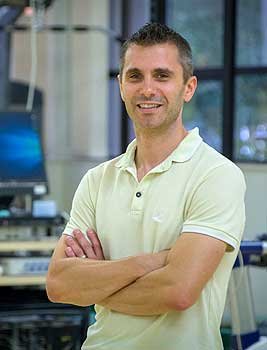

New research from Massey University’s College of Health has shed light on how an emerging therapy for respiratory support works - something that could benefit patients with obstructive sleep apnoea, chronic obstructive pulmonary disease and others that require acute or long-term respiratory support.
Nasal high flow (NHF) is defined as humidified gas delivered at a flow greater than 15 litres per minute through a nasal cannula that maintains or improves patient comfort.
Respiratory disease is the third leading cause of death in New Zealand, affecting one in six Kiwis at an annual cost of approximately $6 billion. Associate Professor Toby Mündel from the School of Sport, Exercise and Nutrition says some evidence points to NHF being as effective as non-invasive ventilation in acute respiratory failure, and superior to conventional oxygen therapy for long-term treatment of respiratory disease.
However, he adds, most of the previous research in this area has been performed on patient populations that may be confounded by disease-specific factors.
“We know that a major mechanism of NHF is to purge the upper airways of expired air and replace it with fresher gas, but we don’t know how this exactly works. Another complication is that whilst we are awake, behavioural influences can mask the real effect and mechanism of NHF, therefore studying these effects during sleep is the preferred setting.”
Dr Mündel and long-time collaborator Dr Stanislav Tatkov, clinical research manager at Fisher & Paykel Healthcare, measured ventilation in healthy young males during sleep where they increased the amount of carbon dioxide drawn into the NHF gas.
“The results showed that NHF reduced ventilation during sleep as a result of smaller but more efficient breaths, caused by a reduction in the rebreathing of carbon dioxide from deadspace – inhaled air that does not reach the lungs, and is therefore not used for gas exchange. These findings help explain why and how acute and chronic-care patients receiving respiratory support with NHF display de-escalation of care and improved health-related quality of life, namely by increasing breathing efficiency and reducing wasted ventilation, which should unload respiratory muscles to decrease the work of breathing,” Dr Mündel says.
Dr Mündel’s current study, sponsored by Dr Tatkov and Fisher & Paykel Healthcare, will determine if more prolonged breathing with NHF (two hours) alters the responses seen during acute 30 minute exposure.
Nasal high flow reduces minute ventilation during sleep through a decrease of carbon dioxide rebreathing was recently published in the Journal of Applied Physiology.